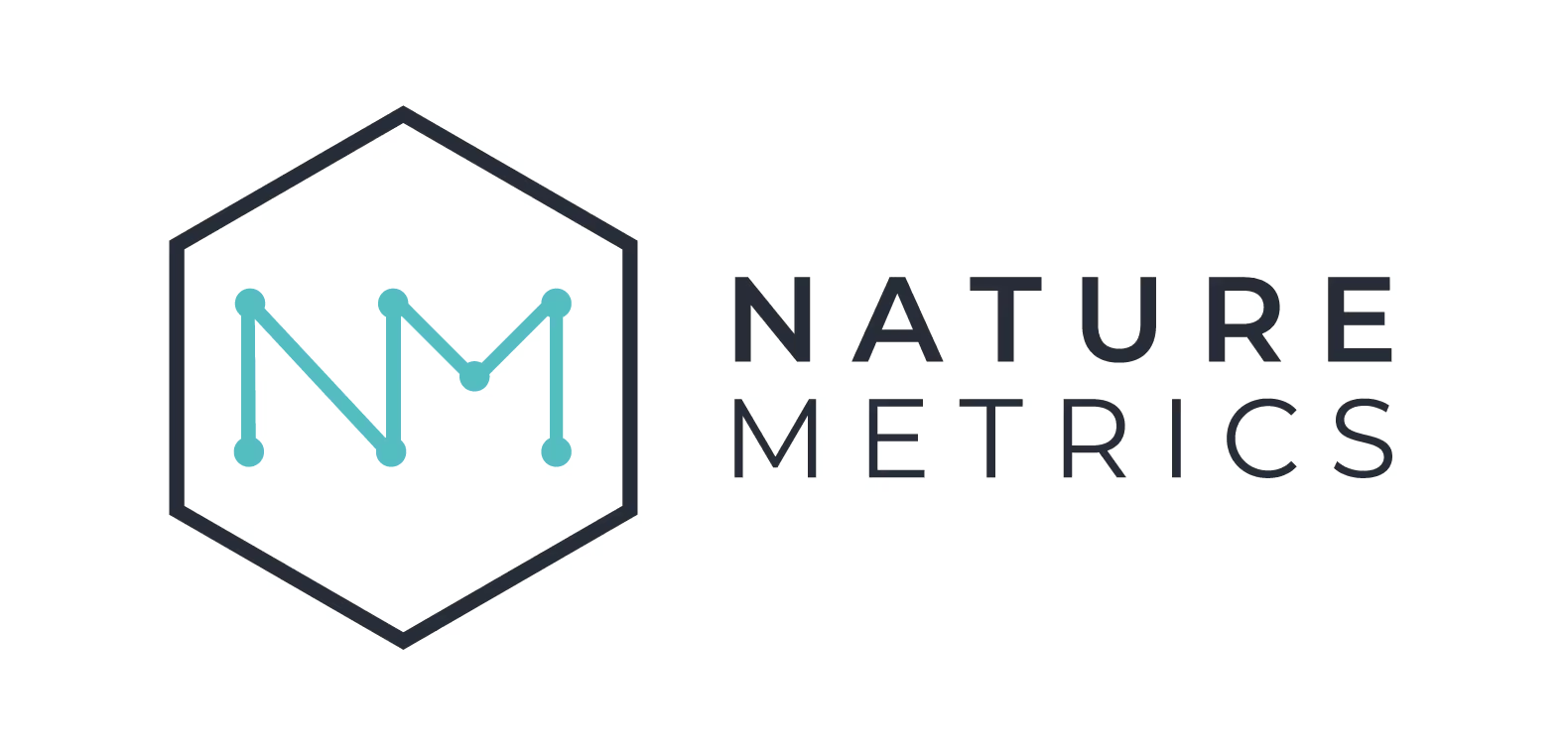TISSUE KIT
For use in all countries
- All kit users must familiarize themselves with data requirements set out in the Sample Manifest, prior to sampling.
- Please ensure all information sent to NatureMetrics is in English.
- Datasheets must be completed using a pencil only.
- Kits should be used within six months.
Sample types
The NatureMetrics invertebrate tissue kit has been optimized for the collection of invertebrate community samples. We accept samples from a variety of established sampling methods, from a variety of habitats:
- Terrestrial: malaise, pitfall, light, pan and Winkler traps.
- Freshwater: kick-nets.
- Marine: 'scrapes' from marine structures, e.g. ship hulls, port walls, artificial reefs, wind farm structures etc.; or from open water, e.g. plankton nets.
For high quality DNA sequencing, we recommend analytical-grade ethanol (> 95%) as a trapping solution, or food-grade propylene glycol as an alternative.
Do not use formaldehyde during trapping and/or storage.
Please contact the NatureMetrics team if you plan to use trapping solutions/preservatives other than ethanol.
Samples must have any debris and non-target organisms removed before being transferred to the pot within the kit. Inclusion of this material can bias results and even cause sample failure.
Kit storage: pre-sampling
- All kits should be used within six months.
- Prior to use, kits can be stored at ambient temperature but MUST be stored in a dry, cool, well-ventilated place and protected from light.
- Keep the sample container closed when not in use and away from heat and sunlight.
Kit contents

1 x pair nitrile gloves
1x sample container with 200mL of preservation buffer
1 x mesh sieve 1 x mesh seal
1 x sample spoon
1 x blank ID label
1 x sampling datasheet
1x disinfectant wipe
1 x safety bag with absorbent pad and document pocket
Vampire Pump
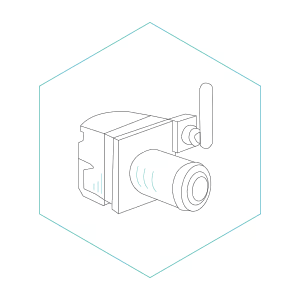
1 x pump head (A)
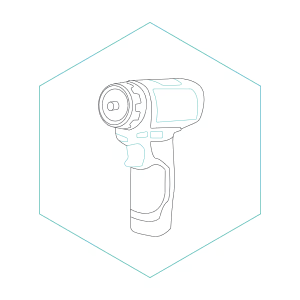
1 x drive unit (B)
YOU WILL NEED
- Device to capture GPS coordinates (lat / long) (e.g. GPS capable smartphone or standalone GPS device)
- Pencil (to complete the datasheet)
- Permanent marker (for labelling sample pot)
- A bottle or other container for any waste trapping / non-NatureMetrics preservation buffer
More than one person using the kit? Please purchase extra gloves.
To minimize waste we provide one pair of gloves per kit. If two or more people will be handling the contents of the kit and collecting an eDNA sample, you will need to purchase additional pairs of gloves – enough for one pair of gloves for each individual handling the kit. We recommend purchasing medical-grade nitrile gloves.
TIPS FOR GETTING THE BEST RESULTS
Avoiding Inconclusive Results:
To get the best results possible, to avoid inconclusive results, and to avoid situations where data cannot be reported from a sample, please read our HOW TO AVOID INCONCLUSIVE RESULTS guide before undertaking fieldwork.
In summary, when inconclusive results occur, it is because the target DNA was not detected, DNA was degraded, or PCR (a crucial part of the lab process) was inhibited.
Key steps you can take to help avoid inconclusive results: do not leave your samples exposed to sunlight or heat, and return samples to NatureMetrics as soon as possible after sampling.
Avoiding contamination:
To increase confidence in results, avoiding contamination of samples is highly important. Sealed kits are sterile until opened; do not open more than one kit bag at a time, keep kit contents inside the bag before use, and put on the provided gloves before touching other kit components. Whilst wearing gloves, avoid touching anything not necessary to sample collection to minimize introducing external DNA into the sample. Change gloves between each kit. If any reusable tools are used, these should be decontaminated, using a disinfectant wipe or a bleach solution, between each sample.
COLLECTION OF INSECT COMMUNITY SAMPLES
The NatureMetrics invertebrate tissue kit and protocol is intended only to provide the content required for suitable transfer, storage and shipping of samples – guidance on how invertebrate samples are collected and any equipment required to do so is not included within the kit. Please talk to a member of our team if you would like further advice on how to collect invertebrate samples.
Once the invertebrate community sample has been obtained:
1. Open the kit bag. Kits should be used one at a time to minimize contamination between samples. Do not open more than one kit at a time, especially if kits are to be used at different sampling locations. Put on the gloves provided to reduce potential contamination and to protect your skin from chemical exposure.
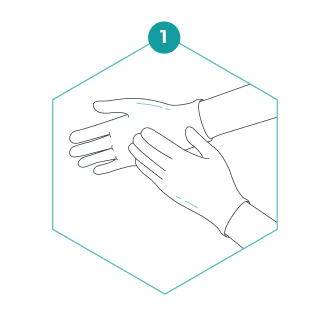
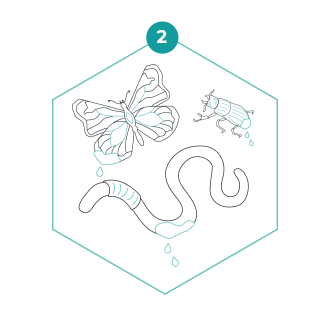
2. Take the sample container out of the grip seal bag. This bag should not be used for the return of samples. Carefully open the container lid, taking care to avoid spilling the liquid. The lid should be placed upside down on the kit contents bag while completing the next steps to reduce potential contamination.
3. If a preservative was used during collection and/or storage of the invertebrate community, or the sample contains water, drain the sample of any fluid using steps 4-11 (below).
If sample does not have any liquid, put the sampled organisms into the sample container. Using gloved hands, remove any non-target organisms and unwanted debris (e.g. plant matter, stones etc.) from the sample.
4. For samples with liquid, remove the mesh seal from around the mesh sieve. Place the mesh sieve over the top of the container you have used to collect invertebrates and use the mesh seal to secure it. Make sure the mesh sieve is fully secured under the seal on all sides. The mesh should be tight across the top.
5. Slowly pour any fluid used to capture/temporarily store invertebrates out of the mesh covered container into a waste liquid bottle/receptacle (not provided). Keep pouring until the liquid stops.
Note: The mesh sieve and seal will fit fully on the majority of containers, alternatively, the mesh sieve can be held taught over an edge of a larger container.

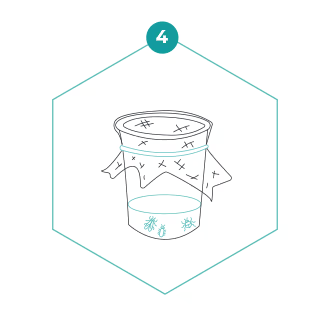
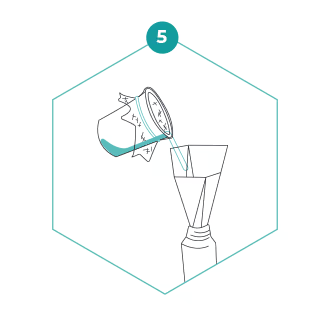
6. Remove the mesh sieve and mesh seal from your container and place them on the upturned lid.
7. Using gloved hands, remove any non-target organisms and unwanted debris or detritus (including and plant matter, stones etc.) from the sample.

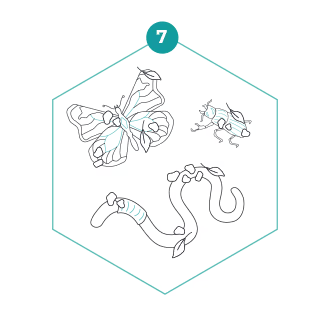
8. Pour half of the preservation buffer from the sample container into your container.
9. Swirl the liquid around your container to dislodge the majority of the invertebrates from the container walls.
10. Pour the invertebrates and buffer into the sample container.
11. Repeat steps 8 to 10 until all invertebrates are transferred to the sample container.
12. The total volume of sample and preservative must not exceed 300mL. Use the volume markers on the sample container as a guide.
Important: Do not fill the sample container with organisms beyond the 300mL line indicator. Any excess volume above this line will not be processed.
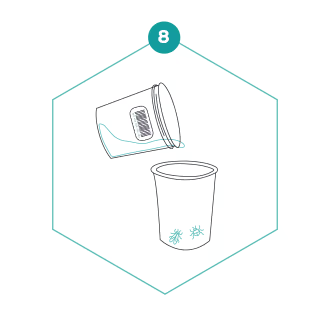
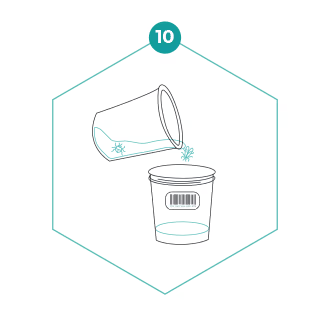
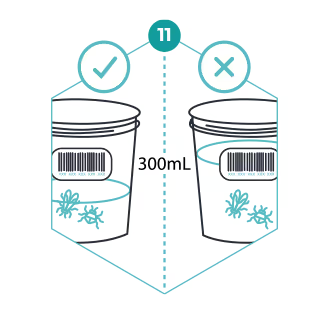
13. If any invertebrates remain to be transferred, use the sample spoon to transfer them into the sample container.
14. Use the sample spoon to remove any invertebrates from the surface of collection container, including the mesh sieve if it was used, and put them into the NatureMetrics sample container. Pinch the ends of the sample spoon to form a scoop if required.
If you are struggling to dislodge the invertebrates from the mesh, gently dip the mesh onto the surface of the preservation buffer to help separate them.
15. Replace the lid on the sample container, making sure it is securely fastened.
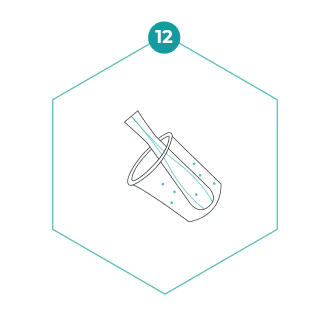

16. Write your unique sample ID on the blank ID label on the sample container lid. This can be any combination of numbers and/or letters you want to use to identify this unique sample.
17. Tear open the disinfectant wipe sachet and clean the exterior of the sample container. Place the sample container into the safety bag with the absorbent sheet and securely seal. Clean the exterior of the safety bag with the wipe.
Note: Ensure you are wearing gloves when using the disinfectant wipe.
18. Complete the sampling datasheet using a pencil (do not use pen as ink can easily run, to the point where it becomes unreadable). Complete the sample manifest, which was attached to the email confirming shipping of your kits. Please record your sampling data on paper and on the sample manifest so there is a physical and electronic copy of your data.
19. Place the datasheet into the document pocket of the safety bag.
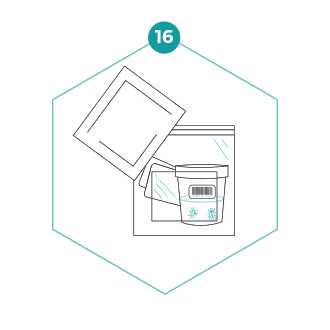

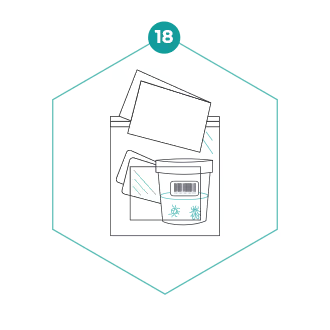
20. Place the safety bag, with the sample container and the sampling datasheet inside, back into the kit contents bag.
21. It is important to keep the samples out of direct sunlight, if possible keep them in a dark place away from any sources of light. Keep the samples as cold as possible, in a freezer where possible, or in a refrigerator. Samples should be received by the lab within 1 month of sampling. If this is not possible, samples must be frozen as soon as possible after sampling to enhance DNA preservation until they are sent back to us. Cold shipping is not necessary for frozen samples.
22. For sample returns, visit our customer support desk here. Use the Logistics Request form to upload your completed sample manifest and book your sample return. NatureMetrics is fully compliant with current legislation on the transport of biological material and our operations team are on hand to ensure that all return shipments meet the required specification. We are only able to analyze samples that are returned using the correct NatureMetrics logistics procedure.
23. For samples being shipped to NatureMetrics from outside the UK:
It is important these samples are packed and shipped in accordance with our Global Invertebrates Storage, Packing and Transport Instructions to ensure clearance through UK customs. Each sample container will need to be sealed within a specimen bag prior to shipping. Both the sample containers and specimen bags must be wiped with disinfectant prior to their return to us. Please read the guidance here before commencing sampling.
The only essential thing to send back to us is the safety bag with the sample container inside and the sampling datasheet in the safety bag pocket. However, all kit contents can be sent back to NatureMetrics for recycling. NOTE: Used kit contents must be cleaned and dried to remove any contaminants before returning them to us.
Dispose of any liquid and other used kit components responsibly and in accordance with the requirements of the local Waste Disposal Authority. Do not pour any of the NatureMetrics preservation buffer directly into the environment.
Packing your samples for transport
- Return your samples using the box that kits were sent in, where possible.
- If using an alternative box, ensure that it is in good condition and remove any old labels.
- Avoid excess spacing by adding cushioning material (e.g. bubble wrap, newspaper) to avoid the product shifting inside the box.
- Ensure samples are kept upright.
- Use good quality sealing tape and seal along box edges in a H pattern.
Your responsibilties
Important considerations for your sampling
- The absence of a detection does not necessarily imply the absence of a taxon from a location.
- Samples from some locations might have compounds that inhibit analyses resulting in reduced data generation.
- It is the responsibility of the client to ensure that all efforts have been made to avoid contamination from external sources between samples.
- Handling samples without gloves can increase the content of human DNA, reducing data generation.
- After sampling, movement of samples across borders without permission is not allowed as they are classed as biological samples.
- It is the responsibility of the client to check for the occurrence of and potential in encountering CITES listed taxa. The relevant National CITES Authority should be contacted as necessary.
- Overfilling the sample container compromises sample integrity. It is understood that in some samples this means that it will not be possible to transfer the entire invertebrate community collected, but this standardisation is required to ensure that samples are adequately preserved.
- Sample volumes received in excess of the maximum fill (300mL) line will be discarded prior to laboratory processing. This standardisation is required to ensure samples are comparable. If it is not possible to transfer the ensure invertebrate community collected into one NatureMetrics sample container, further invertebrate DNA kits are recommended to be purchased.
Disclaimer: Safe sample collection is the responsibility of the Client. NatureMetrics accepts no liability associated with the use of the kits and sample collection. The Client is solely responsible for the quality of the samples and the representativeness of the samples received by NatureMetrics. The information contained within the Final Report provided by NatureMetrics to the Client is not intended to be advisory, it is informational. Interpretation and decisions are the sole responsibility of the Client. NatureMetrics does not accept any liability whatsoever for any reliance placed on any information contained within, or any use that may be made of, the Final Report by the Client. Please read the full limitation of liability statement in the Terms and Conditions.
Health & Safety information for this kit can be viewed here.
